Biden-omics is a Disaster: His policy and results are HORRIBLE. Inflation is up, the stock market teetering, all while working class Americans struggle to make ends meet.
The liberal Democrats and Biden keep pushing their ‘green new deal’ and other misguided policies that are costing EVERY American daily.
The good news…we have an election next year. Elections are about choices…not necessarily perfect or the best choices…but choices that matter.
Talk to your friends and neighbors. Challenge the status quo. Don’t buy into this WOKE politics of the demented left.
We are blessed to live in the most prosperous, free, and tolerant country in the world. It’s a Republic, still, if we can keep it.
Voting matters.
Pay Attention: The world is changing and there are many who are pushing policies that will change our country and the world as we know it.
Ignoring the policies of these radicals guarantees your children and grandchildren will face unprecedented challenges…and the enemy may be from within.
Policy matters. Education matters. Our institutions matter.
Hiding in your suburb or cottage will NOT work. America is in for another revolution…but the good news is this one will be fought at the ballot box.
America is a center-right nation when its awake…wake up folks…the crazies are doing their best to control and direct society in a way that would make our Founders roll over in their graves.
America has been a beacon for freedom, liberty, and tolerance. It’s worth fighting for!
Read more below and follow me on Twitter & GETTR – @sanuzis
–Saul Anuzis
Click Here for Past Commentary from Saul
Saul’s News Rewind Video is Now on Rumble!
This Week: Protestors storm the capitol, Biden’s pick for ambassador to Israel facing GOP opposition, and Trump comes out ahead on economy according to new poll!
Links to the articles discussed in the video:
https://dailycaller.com/2023/10/18/pro-palestinian-protesters-fill-cannon-building-capitol-hill/
https://www.politico.com/news/2023/10/18/biden-israel-ambassador-republicans-00122287
https://thehill.com/homenews/campaign/4264352-swing-state-voters-trust-trump-more-on-economy/

DONATE TO 60 PLUS!
We’re fighting every day for seniors and retirees by working to eliminate the death tax, ensure healthcare freedom, and save social security for future generations. With your essential help we will continue the fight. You can even donate using Bitcoin and Ethereum!
Thank you for your help and support of the 60 Plus Association.
Donate Today! Visit https://www.60plus.org/donate
Remember: The Democrats Have Problems Too
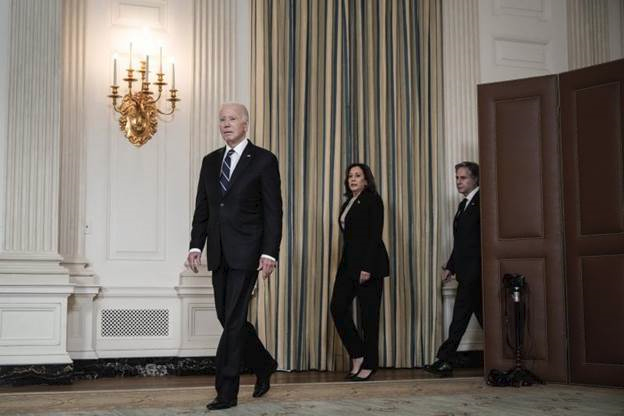
The GOP’s failure to quickly settle on a successor to House Speaker Kevin McCarthy appears to have damaged the party’s interests and image, perhaps irreparably. At least, that’s what the overwhelmingly liberal majority of the punditocracy would have people believe.
To them, the Republicans are a party in perpetual chaos, incapable of winning the next national election. From McCarthy to Donald Trump and beyond, they believe the GOP’s continual string of errors, unforced and otherwise, is setting up a return to power for the Democrats in Washington and across the states.
Maybe. Or maybe they’re so busy cheerleading for the opposition that they ignore what’s happening around them. As veteran conservative activist Morton Blackwell puts it in his Laws of the Public Policy Process, “Remember the other side has troubles too.”
Joe Biden and his allies have had two years and an intervening election to fix the nation’s problems. Instead, they’ve caused more. The latest Gallup poll, released in early October, finds that while neither party is held in particularly high regard, the American people trust the Republicans more than the Democrats “by healthy margins” to handle the economy and national security issues.
In Biden’s war on poverty, poverty — especially for kids — is winning
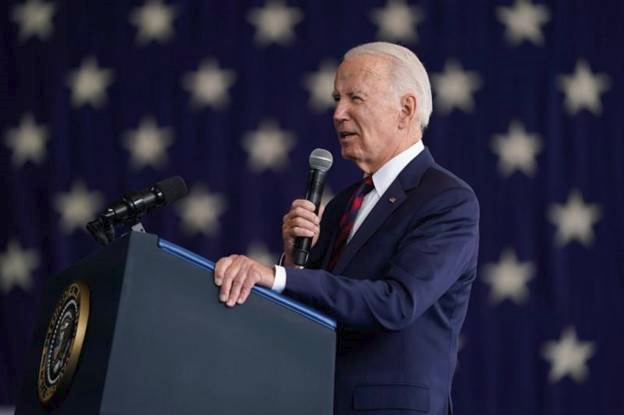
What a cruel irony: The president whose policy obsession from Day 1 in the Oval Office has been not to grow the economy but to reduce income inequality has presided over a near-record surge in the percentage of Americans in poverty.
That’s the finding of the Census Bureau’s annual data report released this week.
In just a year, from 2021 to 2022, poverty in America rose by almost 5 percentage points, from 7.8% to 12.4%.
Today nearly 40 million Americans live in poverty.
Worse is the more than doubling of the child poverty rate, from 5.2% to the same 12.4%.
So much for no child left behind.
Wait. Isn’t this supposed to be a recovery?
The COVID pandemic ended more than a year ago, and the government flooded the zone with some $6 trillion in “stimulus” and “recovery” money.
Where did all that cash go? Where’s the comeback?
Why the divided states of America would be incapable of uniting in a war crisis

Remember the first “Jaws” movie, with the threatening, ominous music each time the audience braced for the shark to attack the boat? Today, the U.S. is on the cusp of a multi-front war. I hear the Jaws music, and the boat’s name is “America Disunited.”
Before Sept.11, 2001, our government was deaf to that iconic two-note soundtrack, failing to “connect the dots” that led to the nation’s worst terrorist attack. The U.S. was bitterly politically divided on Sept. 10, 2001, especially after a Supreme Court ruling had settled the 2000 election in favor of George W. Bush.
Yet immediately after the attacks, Americans rallied behind President George W. Bush. Houses of worship were at capacity. Before a press conference on the Capitol steps, a bipartisan gathering of House members and senators spontaneously sang “God Bless America.”
Unabashed patriotism rippled the nation, inspiring record numbers of military enlistments — the greatest recruitment boom since the 1941 Japanese attack on Pearl Harbor.
Our nation has radically changed since 2001. The polarization, fractionalization, and disunity have reached a whole new level.
Worsening Economy Pushes Consumers Near the Breaking Point
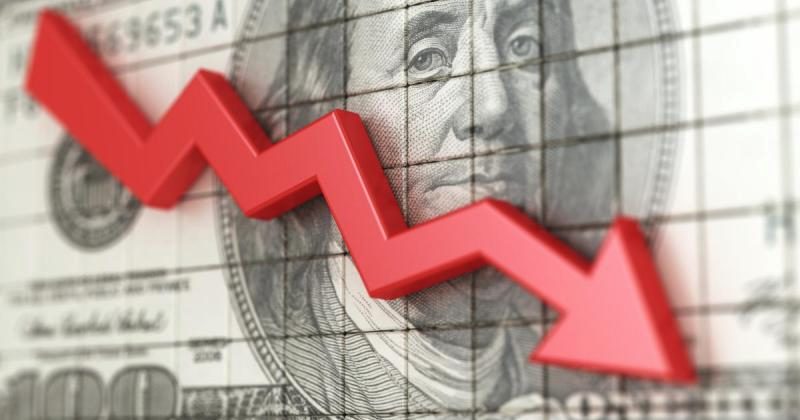
With the appropriations fight in Washington in overdrive, and a barely avoided government shutdown behind it—for now—Congress should be paying attention to the latest economic data now more than ever. Recent revisions show things are actually worse than previously estimated.
In fact, both the American consumer and the federal budget will soon be at the breaking point if Congress doesn’t rein in spending immediately.
The recent comprehensive update to gross domestic product (GDP) by the Bureau of Economic Analysis revised data going back several years. It turns out that when President Donald Trump left office, the economy was growing faster than previously estimated, 4.2 percent versus 3.9 percent. Conversely, the data for President Joe Biden’s tenure has been revised down.
Under Biden, economic growth was revised down in four quarters, just two quarters were revised up, and four were unchanged. Meanwhile, the recession in the first half of 2022 was worse than previously estimated. Not everything was revised down, however—inflation was revised up, meaning prices have been rising even faster than the government said they were.
During Biden’s tenure, inflation data was revised up for seven quarters, down for two quarters, and one quarter was unchanged. Also revised up was government spending, which has now grown faster than consumer spending in each of the last four quarters.
In short, growth in government spending is crowding out the private economy, slowing growth, accelerating inflation, and making people worse off. This new data should be a wakeup call for Congress to the nation’s financial plight.
Inflation Won’t Go Away Until Congress Gets the Deficit Under Control
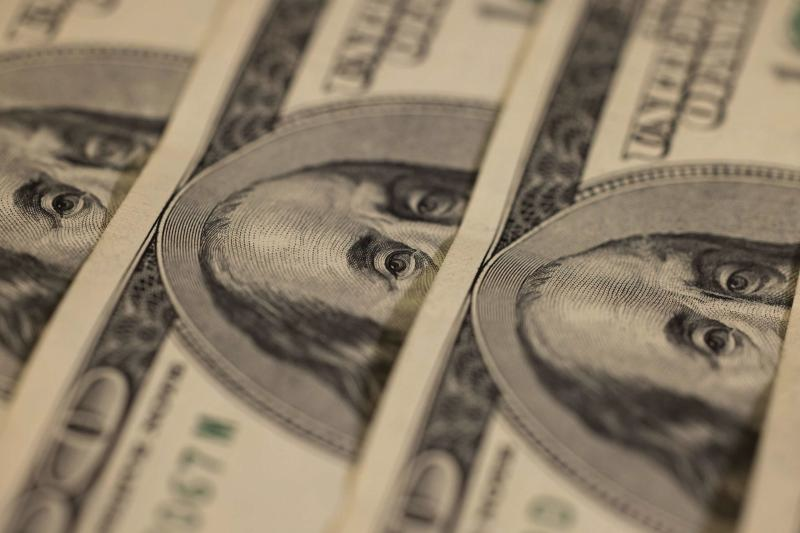
The Federal Reserve’s higher interest rates were supposed to trigger changes to fiscal policy. So far, that hasn’t happened.
Inflation has fallen from the shocking highs that were reached last year, but the Federal Reserve’s efforts have not successfully returned the beast to its cage.
If rising prices are to be fully tamed, it increasingly looks like Congress will have to get the deficit under control first.
Prices are up 3.7 percent over the past year, according to new inflation data released by the Bureau of Labor Statistics on Thursday morning. But so-called “core inflation,” which filters out the more volatile categories like food and fuel prices, rang in at 4.1 percent in the newest report. Some smaller categories have seen considerably faster price hikes over the past 12 months—shelter prices, which include rents and hotel costs, are up 7.2 percent.
Migrant mania comes to sanctuary cities
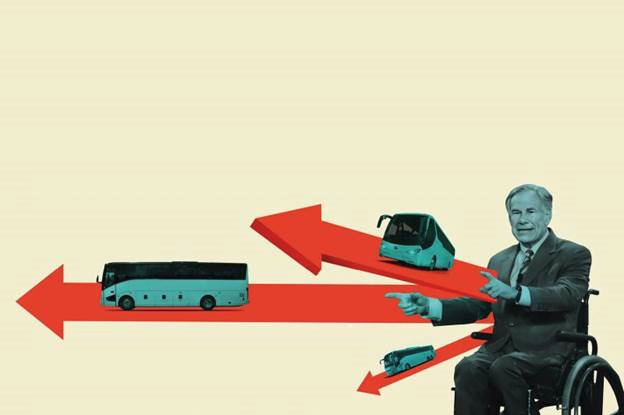
The border crisis is now taking over New York and Chicago. Will that change anything?
The first thing you see when you climb out of the Rio Grande into Eagle Pass, Texas, is the homely site of the municipal golf course. Nine holes along the river expanded to eighteen via different tees, the pruned grass of the course is scuffed and torn from the hundreds of thousands of footsteps that have crossed it just this year, rubber soles that trekked from Central and South America to get to this godforsaken patch of green that signifies the US of A and everything it holds for the migrant who dreams of a new life. As welcomes go, it’s no sparkling torch of Lady Liberty. But climb up the embankment and another few streets in you’ll find the typical tranche of liquor stores and pawn shops, religious tchotchkes galore, fake flowers bright and beautiful and even plastic versions of the Statue of Liberty — stamped on the bottom, as one might expect, with the emblem: Made in China. Welcome to America, friend. Would you tired, poor, huddled masses like an all-expenses paid one-way trip to New York City? You would? Excellent. Just get on board.
Texas governor Greg Abbott, the politician who is very visibly exporting this migrant crisis from Eagle Pass to the shadows of the real Lady Liberty (made in France) is the most important Republican executive leader in the country, even if you haven’t heard much about him. There are two kinds of Texas governor, rawhide and big boardroom, and Abbott is very much the latter.
It’s late September when I’m in New York for a speech Abbott is giving at the Manhattan Institute. When he rolls onto the stage in New York City’s Yale Club, there is an audible murmur from the crowd. Abbott gives a wry smile in recognition: he’s heard this reaction before.
Phone Scams: 5 You Need to Beware Of Now

AI is driving the spike in spam calls, with over 25% of calls from unknown numbers deemed unwanted, or spam, study shows. Americans get an average of 14 spam calls per month.
Hiya, a provider of voice security, recently released a study on phone fraud and spam calls at its State of the Call Summit on October 5th. Of the 98 billion calls observed globally, 25% were flagged as spam or fraud. Of the 2.13 billion calls observed in the U.S. alone, 27% were flagged as spam; however, on the upside, 26% were ultimately determined to be “nuisance” calls and only 1% to be fraud.
The study found that worldwide, the average cell phone user received an estimated 14 spam calls per month.
What You Need to Earn to Own a Home in 50 American Cities

Once a fundamental part of the American dream, the ability to own a home is drifting farther and farther away for many Americans.
Between skyrocketing prices, stagnating wages, and now rising interest rates, the deck seems to be increasingly stacked against home ownership.
Using May 2023 data tabulated by Home Sweet Home, we map out the annual salary needed to afford a 30-year mortgage (at 6.37%) to buy a home in America’s 50 most populous metropolitan areas.
School Choice Is Better for Democracy Than Government Schooling

As state after state embraces policies that empower parents with more options in K-12 education, opponents of school choice are claiming that it is a “threat to democracy.” But if anything, school choice is better for democracy than government-run schooling.
In Texas, the legislature is considering an education choice bill that would make every K-12 student eligible for an education savings account (ESA). With an ESA, parents can use the state dollars associated with their child to pay for private school tuition, tutoring, textbooks, online courses, homeschool materials, and other educational expenses. More than 60% of Texas voters support school choice, but critics claim the sky is falling.
“This is an existential threat to public education,” bellowed state Rep. James Talarico, a Democrat, in a Oct. 11 webinar about the ESA bill, “and therefore an existential threat to democracy.”
This talking point has long been a staple of the teachers’ unions, even though states that have adopted robust school-choice policies have seen their district schools improve and still have democratic institutions. Earlier this year, Randi Weingarten, president of the American Federation of Teachers, alleged that school choice would “destroy public education as we know it,” and is therefore “bad for … democracy.”
A New Leftist Trojan Horse

College education used to be mainly about education, with a side order of fun. Now, it is far more about a host of leftist obsessions: diversity, equity, inclusion. Education is now a peripheral matter, and having fun seems to be frowned upon by our “progressive” scolds.
And now, we have a new obsession — “belonging.” In today’s Martin Center article, Professor Adam Ellwanger writes about this, calling it a linguistic Trojan Horse.
What are we talking about? Ellwanger quotes Cornell’s statement on belonging:
Belonging is the feeling of security and support when there is a sense of acceptance, inclusion, and identity for a member of a certain group. It is when an individual can bring their authentic self to work. When employees feel like they don’t belong at work, their performance and their personal lives suffer. Creating genuine feelings of belonging for all is a critical factor in improving engagement and performance. It also helps support business goals.
So what? Ellwanger explains:
Cornell is interested in belonging only when it comes to acceptance based on one’s “identity” and “member[ship] [in] a certain group.” This is vague language, but make no mistake: Cornell is referring to the categories of individual identity that are presently fetishized on campus: race, sex, gender, sexual orientation, and (non-Judeo-Christian) religious faith. In short, the university is concerned with belonging only when it comes to some students — the ones who are members of minority cultures of political import for the left.
Ah, yes — another linguistic ploy to reshape the university so it does what leftists want it to.
The latest attempt to take away your gas-powered car
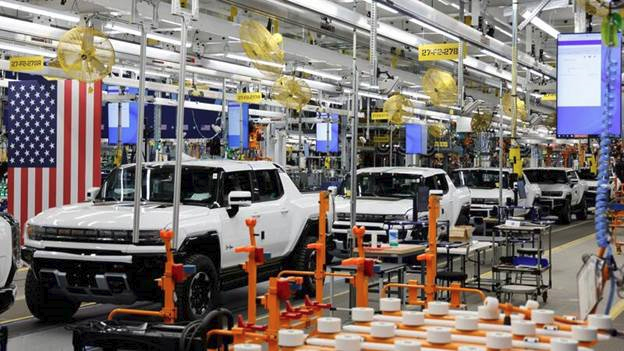
Government should not be pushing the manufacture and sale of one product while demonizing another.
In yet another attempt to regulate the car market and phase out internal combustion engines (ICE), another agency has proposed a rule with lofty ambitions of increasing fleet-wide Corporate Average Fuel Economy (CAFE) standards in passenger cars. This time, to 58 mpg by the year 2032. The only way to accomplish this goal, however, is to force the manufacture and sale of electric vehicles (EV) on a large scale. This conveniently approaches President Biden’s goal of all new car sales being two thirds electric.
Consumer choice is in jeopardy and about to be sacrificed on the altar of climate change. The reality is, few consumers really want an EV. They currently only represent six percent of all new car sales and are not exactly rolling out of dealerships, even after generous government incentives and handouts.
A major overhaul of one of the largest sectors in the U.S. economy is not in the best interest of the average consumer. There are quite a few reasons why EVs are not selling like hotcakes and why the National Highway Traffic Safety Administration’s (NHTSA) rule is ill-advised.
The most obvious reason is the price disparity between EVs and ICE vehicles, in which the former is at least ten thousand dollars more than the latter. Couple that with an increase in insurance premiums by 28%; an expensive installation of a level 2 charging station at your home residence; and the possibility of replacing the 1,000-pound battery with a price tag of up to $20,000. Owning an EV is hard on the wallet, and it is no surprise that the very upper middle- and first-class elites are generally the ones buying them.
But that’s just the tip of the iceberg.
America Is a Root Cause of Israel and Palestine’s Latest WarHow 30 years of U.S. policy ended in disaster
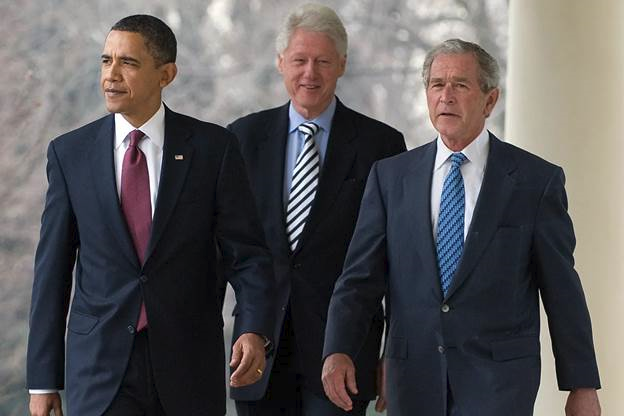
As Israelis and Palestinians mourn the dead and fearfully await news of those now missing, the tendency to look for someone to blame is impossible for many to resist. Israelis and their supporters want to pin all the blame on Hamas, whose direct responsibility for the horrific attack on Israeli civilians is beyond question. Those more sympathetic to the Palestinian cause see the tragedy as the inevitable result of decades of occupation and Israel’s harsh and prolonged treatment of its Palestinian subjects.
Others insist there is plenty of blame to go around, and that anyone who sees one side as wholly innocent and the other as solely responsible has lost any capacity for fair-minded judgment.
Inevitably, arguing over which of the immediate protagonists is most at fault obscures other important causes that are only loosely related to the long conflict between Zionist Israelis and Palestinian Arabs. We should not lose sight of these other factors even during the present crisis, however, because their effects may continue to echo long after the current fighting stops.
Where one begins to trace causes is inherently arbitrary (Theodor Herzl’s 1896 book, The Jewish State? the 1917 Balfour Declaration? the Arab revolt of 1936? the 1947 U.N. partition plan? the 1948 Arab-Israeli war, or the 1967 Six-Day War?), but I’ll start in 1991, when the United States emerged as the unchallenged external power in Middle East affairs and began trying to construct a regional order that served its interests.
Within that broader context, there are at least five key episodes or elements that helped bring us to the tragic events of the past two weeks.

